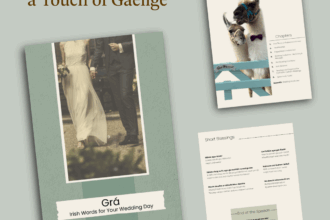I was under pressure almost five years ago, to get my daughters a dog. I explained that having a dog was a full-time job, and they would have to care for the dog, feed it, take it for walks, exercise it, clean up its’ mess and the rest of it. I was not really into the idea as I was concerned that it may just have been a passing interest, but eventually caved in under the constant pleas to have a dog in the house. “OK – on one condition” I blurted out, “It has to be a Scottish dog and there is only one winner in this competition”!
It had to be a Westie of course, (West Highland White Terrier), that photogenic little fur ball with the distinctive look which betrays its’ origin. We arranged to visit our potential new family member at the home of a breeder in Haldimand County, Ontario. He was the runt of the litter, only two months old and my youngest daughter fell in love with him immediately. We decided to take him, and took him home that evening, complete with his pedigree papers.
We gave him the name, “Whisky”, due to Daddy’s wish for the new addition to be given a name which is associated with his home country! Wee Whisky is now in his 5th year and we cannot imagine life without him; he gives us so much pleasure, and as expected, I am now in charge of walking, exercising, cleaning up, feeding and watering!
So, let’s have a look at the Westie, which is most definitely a Scottish breed of dog. It is a small sturdy dog with a solid white double coat which is a straight, hard outer coat around two inches long with a soft, thick undercoat. The modern breed is descended from several breeding programmes of white terriers which were undertaken in Scotland around the end of the 19th century. The story is that Edward Donald Malcolm, 16th Laird of Poltalloch owned terriers which were used to work game. (Poltalloch is located in Argyll and Bute, between Lochgilphead and Oban). One day, a reddish-brown terrier was mistaken for a fox and shot. Malcolm then chose to develop a white terrier breed to differentiate it, and this became known as the “Poltalloch Terrier”. Malcolm however did not wish to be known as the creator of the breed and insisted that his breed of white terriers was renamed and in 1908, the term “West Highland White Terrier” first appeared. That same year, the breed was introduced to the United States, where it immediately became very popular.
The Westie is a very recognizable dog, due to its’ unique round-face and has been featured on television and in films. It has also been used in advertising by companies such as Cesar dog food and Scottish whisky company Black & White.
The Westie is a game, hardy and tenacious little dog and is easy to train. While it is good with children, it won’t always tolerate rough handling and it will let you know if it is not happy. (So don’t allow your kids to pull its’ ears)! It is an intelligent breed, very social and active with a high prey drive; a direct legacy from the reason they were created, which was to hunt rodents. (Whisky has caught a couple of chipmunks and a rabbit but the elusive squirrel remains out of reach). This high prey drive means that the Westie tends to be very interested in toys especially chasing after balls. While it can retain the instincts of an earth-dog, including inquisitive and investigative character and digging holes, I have had no such issues with Whisky and as yet, I have not found any gaping chasms in my lawn!
The Westie temperament can vary of course; most are friendly but like humans, some prefer solitude and it can be possessive about food and toys, but they do like you to play with them. They are generally independent, assured and make good watchdogs – they have amazing hearing and Whisky barks when he hears anyone outside the house. The Westie is very loyal and will form an immediate bond with its’ owner, however it will demand regular exercise. This little dog is a very social breed and arguably the friendliest and happiest of all the Scottish terrier breeds, which include Border, Cairn, Dandie Dinmont, Scottish and Skye terriers.
The average lifespan of a Westie has been placed anywhere between 12 to 16 years by the American Breed Club, while information from the Veterinary clinic in the United Kingdom indicates an average of 10.5 to 15 years.









